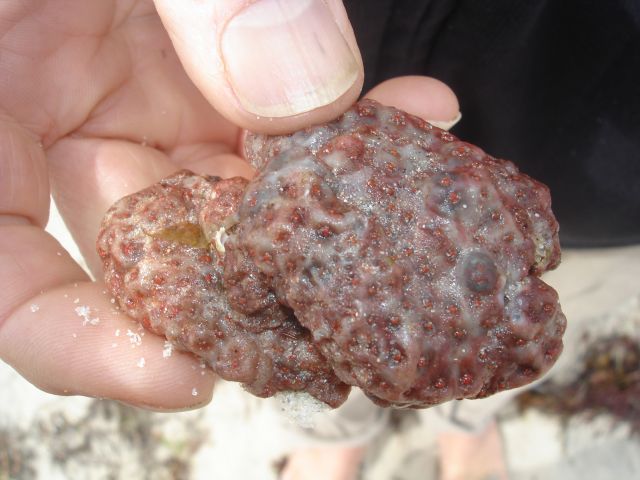Sea squirts
Sea squirts (ascidians or tunicates) are sedentary animals that live attached to rocks. Most commonly found washed up is the orange-red Sea Tulip with its stalk and two openings. Often found also are the colonial sea squirts – squashy objects with many small openings.

Common name
Ascidian or sea squirt
Scientific name
(Chordata: Ascidiacea)
Description
Also called tunicates because of their tough outer covering or “tunic”, the ascidians are sedentary, filter-feeding animals.

Common name
Sea tulip
Scientific name
Pyura australis (Chordata: Ascidiacea)
Description
This is a solitary, stalked species of sea-squirt. Water is pumped into the animal through an inhalant siphon and after being filtered for tiny food particles is ejected through an exhalent siphon.

Common name
Sea squirt
Scientific name
(Chordata: Ascidiacea)
Description
This is another solitary, stalked species of ascidian related to the Sea Tulip. Ascidians have a free-swimming larval stage like a small tadpole that only lives for a few hours before settling on a suitable surface and transforming into an adult sea squirt. Features of the larval stage indicate that ascidians are related to the fishes and other backboned animals.

Common name
Colonial ascidian or sea squirt
Scientific name
(Chordata: Ascidiacea)
Description
This is a colonial species, in which individuals divide to form a colony.
Cottesloe Coastcare Association
PO Box 32
Cottesloe WA 6911
info@cottesloecoastcare.org
Sign up to our Newsletters
To stay up to date with our news and upcoming events.
